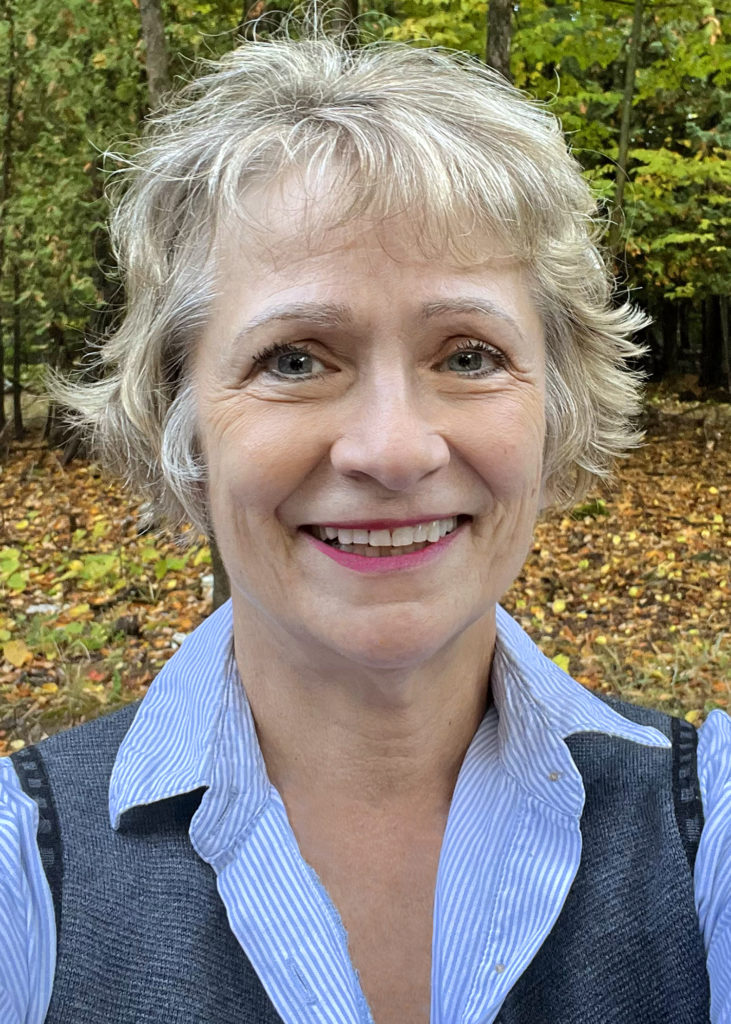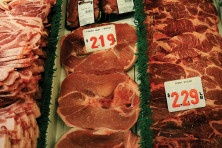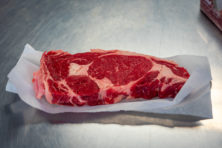A Meat by Any Other Name
- Share
- Tweet
- Pin
- Share

Earth to Kay

by KAY McKINLEY, Communications Coordinator, Door County Land Trust
Growing up in the suburbs of Chicago, my idea of edible meat was a semi-rectangular item that ranged in color from light pink to burgundy, resting on a Styrofoam tray and wrapped in plastic. That changed when I went to college in Wyoming.
Embracing the culture and living on a sparse student grocery budget, I found myself hunting pronghorn antelope one sunny, fall Saturday on the plains outside of Laramie.
My eyes fixed on antelope scattering in the distance. When I came within what I thought was the correct range, my heart raced with excitement. I rammed the butt of the rifle tight against my shoulder to prevent any recoil injury – as instructed only the day before. I took a lucky shot; a member of the herd’s legs buckled, and he fell. When I reached the antelope, it was just in time to see the life leave his eyes. The “thrill of the hunt” was replaced by a deep feeling of remorse. I had killed a living thing.
Stay with me. This is not going where you might think.
Prior to the hunt, I had been educated by a friend studying wildlife biology as to why hunting is a necessary part of conservation. Regulated carefully by state Departments of Natural Resources (DNR), hunting balances ecosystems so that overpopulated game won’t overtake plant and other animal species. Without keeping the balance in check, various species could eventually become extinct, including the dominant one. In the short term, animals can go through painful starvation.
That is why hunting on Door County Land Trust preserves is welcomed. Conservation and hunting are one and the same, but only when done responsibly. Adhering carefully to DNR guidelines, including hunting schedules and safety precautions, is key. The Land Trust has tips to help both hikers and hunters have a successful and safe hunting season.
For hikers: Wear blaze orange; stay on the trails; always keep pets on a leash because trapping is allowed; brush off your footwear when entering a preserve to prevent the seeding of invasive species; and visit doorcountylandtrust.org/how-we-save-land/hunting-program to review a list of preserves that do not allow hunting.
For hunters: Be aware of other hunters and hikers in the area; wear blaze orange; brush off your footwear when entering a preserve to prevent the seeding of invasive species; and visit doorcountylandtrust.org/how-we-save-land/hunting-program to see more details and review a list of preserves that allow hunting.
Also, prior to the hunt, hunters are asked to contact the Land Trust by completing the online Hunting Info Form on the website.
Additional tips for hunters: No cutting of trees or vegetation, or removing brush from properties, is allowed; no baiting; and no motorized vehicles. If a hunter needs to follow a wounded animal onto private land, prior permission must be obtained from the landowner. Dogs actively engaged in hunting may be off leash during hunting season.
And finally, portable hunting stands and structures, including trail cameras, are permitted for day use only and must be removed each night. All stands and structures must contain the owner’s name, address and phone number. If a stand or other structure is left overnight, it will be dismantled and removed by staff or preserve stewards.
I do support hunting, but it’s been a while since I hunted dove and pheasant or tasted a memorably delicious Thanksgiving wild turkey that had feasted on sage. The antelope was the last large game that I took down, but I’m still thankful for the ground antelope meat – and the Hamburger Helper to season it that sustained me throughout my junior year.
Kay McKinley is communications coordinator at Door County Land Trust. She is educated daily on what it means to be a thoughtful citizen on a planet that needs our attention.




